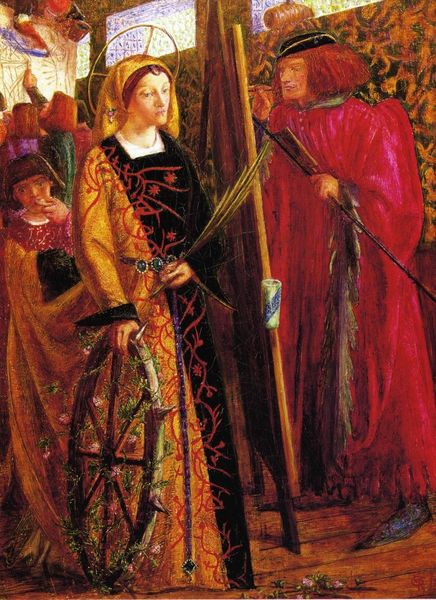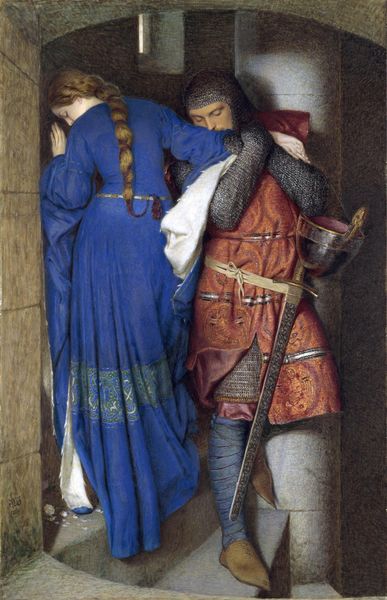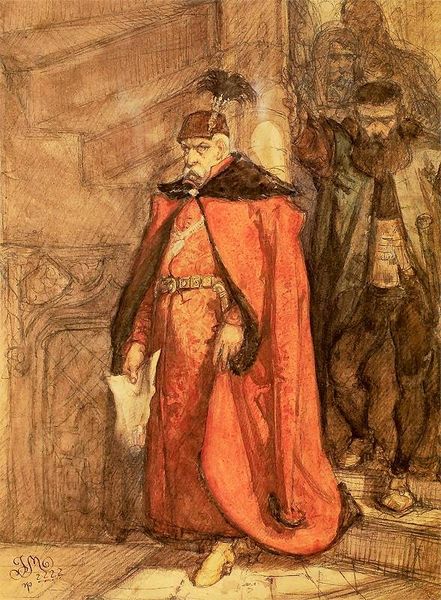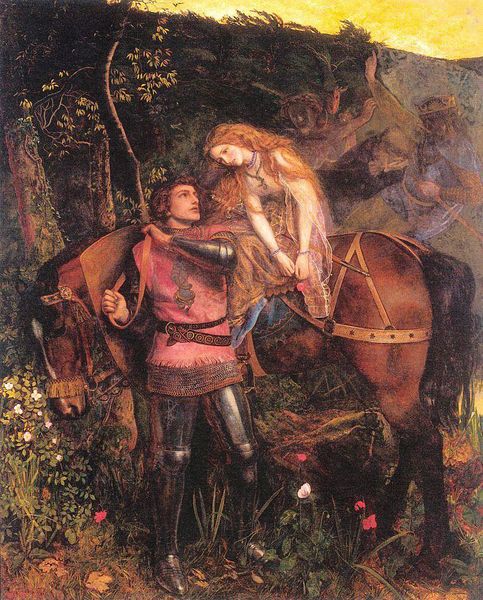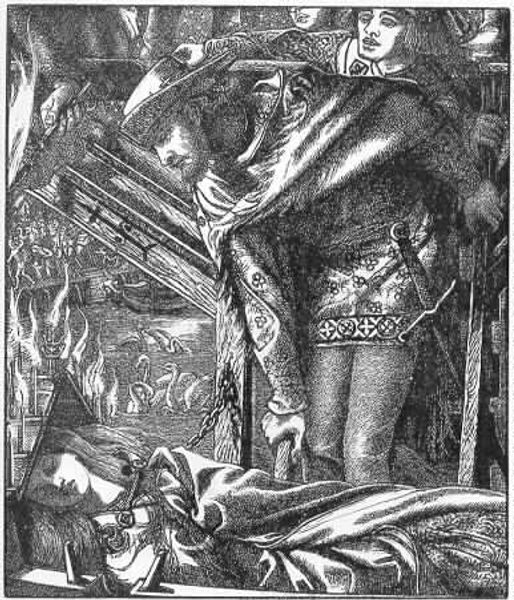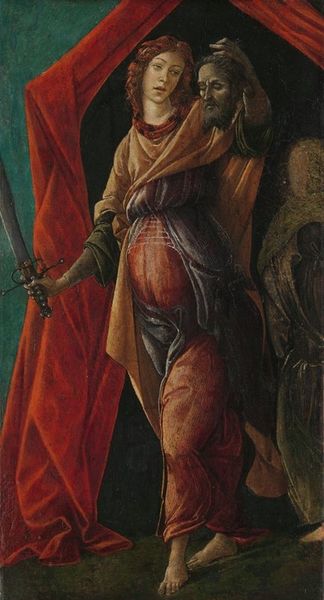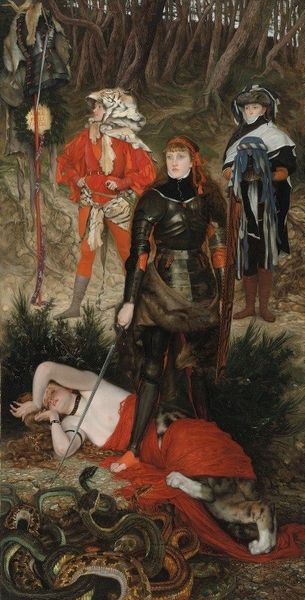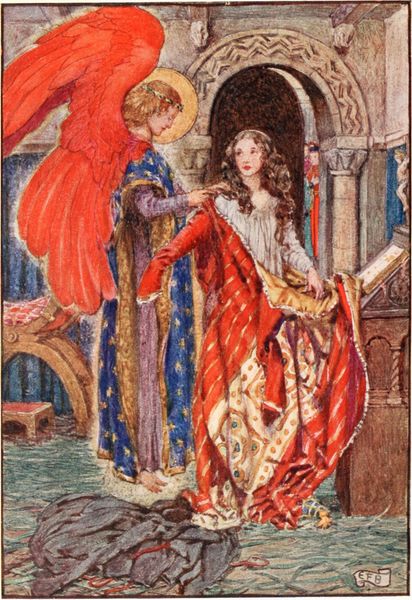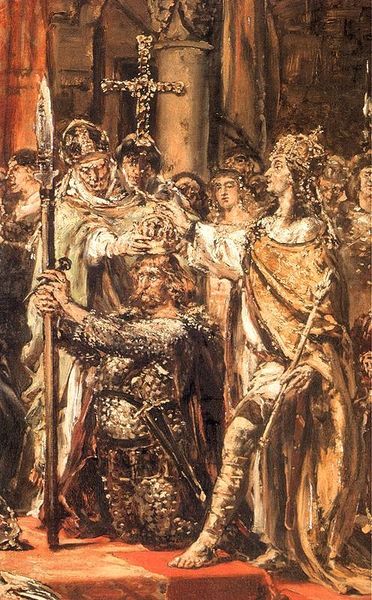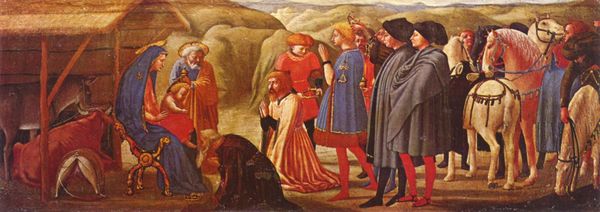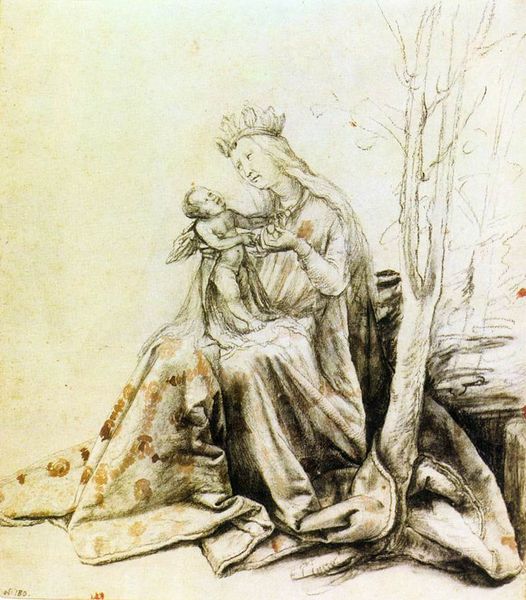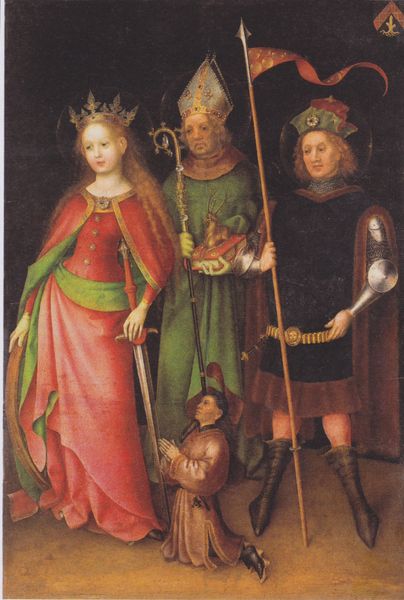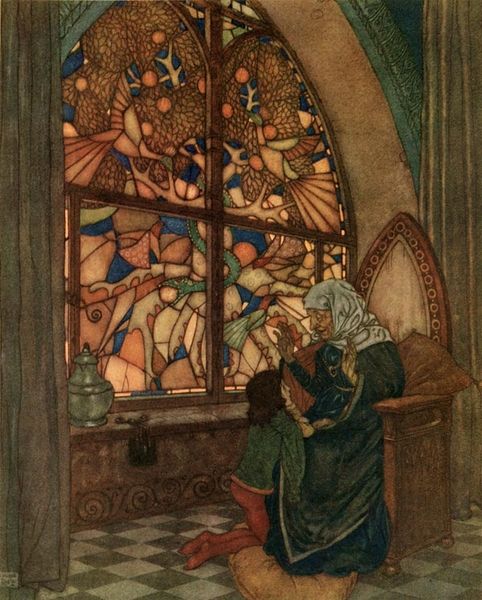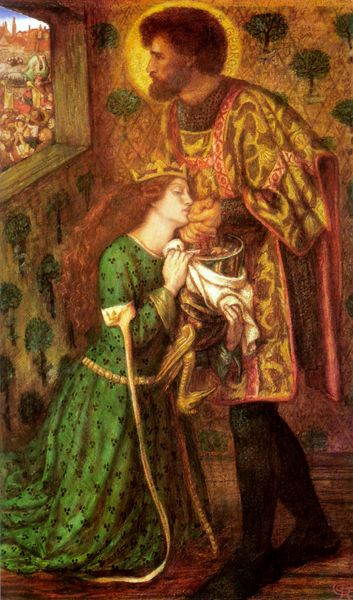
How They Met Themselves 1864
0:00
0:00
dantegabrielrossetti
Fitzwilliam Museum (University of Cambridge), Cambridge, UK
Copyright: Public domain
Curator: Rossetti's "How They Met Themselves," created in 1864, always leaves me feeling as if I've stumbled into a very strange, twilight dream. Editor: The first thing I notice is how much this is about texture. The materiality of the clothing, the way the oil paint creates almost brocade effects—it’s definitely highlighting a certain level of craft and opulent consumption. Curator: Absolutely. Rossetti had such an incredible sensitivity to fabric; he often incorporated it into the frame itself, didn’t he? To amplify the atmosphere and evoke mood? I’m especially drawn to the figure in the centre. Their embrace seems almost… spectral. The idea of meeting oneself—talk about uncanny! Editor: The clothing plays a crucial role, the patterns suggest mass production’s early stages affecting even historical romance—that woven tapestry pattern would now be repeatable by a machine rather than hand-crafted. Also, the positioning of the sword: Rossetti highlights it like it's jewelry, shifting the purpose of production from necessity to art. Curator: Rossetti frequently drew upon myth and historical romance in his paintings. This one's unique as the title refers to the myth that meeting your own wraith is a death omen. I think that creates a compelling duality—both fascination and trepidation within that shared embrace. It makes you think about doppelgangers and what it means to truly know ourselves. Is there anything more frightening, maybe more enlightening? Editor: And even considering who’s consuming and producing art during the Pre-Raphaelite movement. The focus shifts from royal or religious patronage towards individual consumption; objects as art are made available to a wealthier middle class, transforming both the creation and significance of art. Curator: True. "How They Met Themselves" acts as a subtle bridge between those two worlds. Ultimately, it reminds me that even the most gorgeous tapestries—literal or metaphorical—can hide a dark thread or two. Editor: A perfect meeting of visual storytelling and early industrial commentary then. A true Pre-Raphaelite collision.
Comments
No comments
Be the first to comment and join the conversation on the ultimate creative platform.
